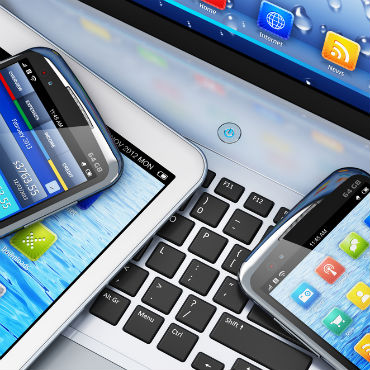Federal agencies must prepare for mobile payments

Now that all the major smartphone platforms offer mobile payment options, federal agencies need to join the trend

In October, Apple removed the final impediment to a future in which credit cards no longer reside in our wallets but instead live on our mobile phones.
With the introduction of iPhone 6 models, Apple phones have joined Android and Windows phones in featuring near-field communication chips, the technology that allows two NFC-enabled devices placed near one another to exchange data and enables users to pay for goods and services at the touch of a smartphone.
Now that this mobile wallet technology is available on all major smartphone platforms, industry and the federal government are taking notice.
Until now, the cost of installing new pay terminals prevented wide adoption of mobile phone-based payment platforms. That mind-set, however, is changing quickly. NFC technology is far more secure than credit cards are, and recent wide-scale, highly publicized data breaches will drive demand for a safer way to pay for goods and services. And consumers will also increasingly demand the convenience mobile payment offers.
Retailers have a further incentive to incorporate mobile payment options by October 2015. That's when American Express, Discover, Visa and MasterCard plan to impose penalties on retailers that don't install terminals that accept payments from contactless smart credit cards and smartphones with NFC chips.
As consumers get used to paying for their retail purchases via their phones, they'll expect the government to offer that option, too.
There are plenty of places the government could allows such payments, including parks, Department of Motor Vehicles offices, schools and almost anywhere a government agency accepts credit cards. However, agencies should ask seven important questions before they adopt mobile wallet technology:
1. Do we really need to think about this right now? The traditional wallets and purses people carry today -- bulging with cash, credit cards and checkbooks -- are going away. Mobile will surpass those payment methods. Rather than falling behind the curve, agencies should assess the options and implement their preferred mobile platforms now, while the private sector is also going through the process.
2. Does the service we provide lend itself to smartphone delivery? Mobile payments work well with certain government services, including business registrations and certain license renewals. It's not the right delivery method, however, for services that require completion of lengthy forms, such as corporate income tax filings. Before investing in a mobile payment solution, make sure the service you offer is one your constituents will actually want to access from a mobile device.
3. Who picks up the tab? With any payment system a federal agency considers, it's important to understand what the true costs are. Mobile transactions always carry a fee, and you'll need to decide whether your agency will accept that fee as a cost of doing business or pass it on to users. If you ask customers to cover the fee, how will you communicate that information to them?
4. How many payment systems will the agency accommodate? In addition to Apple Pay and other mobile platforms, Twitter is planning to offer its own payment system. Merchant Customer Exchange also will be a big player. That retailer consortium, which includes Walmart and Best Buy, will release a mobile payment solution called CurrentC. Bitcoin, Dwolla and other contenders are emerging as well. Some technologies might allow agencies to partially offload risk, but you should evaluate each potential option based on how willing your users are to embrace it and how much it will cost to implement and maintain.
5. How will the agency get its money? Users of government services have traditionally paid by cash or check, and financial rules dictate how quickly the agency receives the funds. With so many mobile payment systems becoming available now, agencies must clarify how -- and how quickly -- a system they're considering will deliver the money.
6. How can we make the system seamless? One goal for mobile checkout is to make the entire process easy and intuitive. The mobile application should walk the user through the process and keep everything as simple as possible. Minimizing data input will help users get through the transaction more quickly. Ideally, the payment process also should be integrated into the application so the user is not directed to a different site to make the payment.
7. What will make mobile payment most efficient for our users? Often, people who interact with government need to complete more than one transaction at a time, such as multiple vehicle registrations. Legacy systems typically make users start at the beginning of the process for each transaction. Autofill options for completing forms and a "shopping cart" approach would make it easier for users to carry out several transactions and pay for all of them at once.
The credit card industry has been moving toward mobile wallets for some time, but Apple Pay has hastened the timeline. If you're not already asking the questions above, don't wait. In 2015, mobile payments will accelerate, and Americans will expect agencies to support those alternative payment options.
NEXT STORY: Clock runs out on FOIA update


